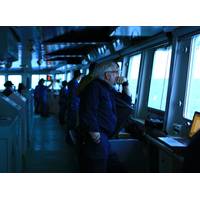
Ice Navigation: Every Voyage is Different
operators are caught by surprise.”Warmer average temperatures and the corresponding loss of sea ice is allowing glaciers to move more quickly across the land and then calve more readily when they reach the sea. That means more glacial ice, more icebergs.“We are seeing icebergs in the Beaufort Sea, where we never saw them before, because multi-year ice used to sit on the top of the north side of the Canadian Archipelago. But, with reduced multi-year ice cover in the Arctic, the glaciers are now able to calve off and the currents are carrying glacial ice into the Beaufort Sea.“So,

Rocket Scientists Build Antarctic Robot Probes
melting vast ice sheets around Antarctica and what that means for rising sea levels.A prototype of the submersible vehicles, under development by NASA's Jet Propulsion Laboratory near Los Angeles, was tested from a U.S. Navy laboratory camp in the Arctic, where it was deployed beneath the frozen Beaufort Sea north of Alaska in March."These robots are a platform to bring science instruments to the hardest-to-reach locations on Earth," Paul Glick, a JPL Robotics engineer and principal investigator for the IceNode project, said in a summary posted on Thursday on NASA's website.The probes

The Value of Friends in “High-Latitude” Places
designed to measure mean ocean temperature over great distances and long time periods to contribute to global warming research.On Nov. 25, after more than a month at sea, the Svalbard returned to port in Longyearbyen in Norway after the successful recovery of three American deep-water moorings in the Beaufort Sea. Executed on short notice, in challenging conditions, the successful recovery is a tribute to the collaborative spirit, bravery and expertise of the Norwegian navigators and scientists. It is also a great example of how U.S. allies, such as Norway, act as force multipliers and important team mates
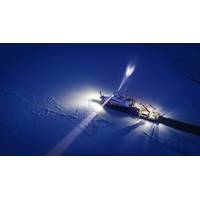
TECH FILE: Acoustic Tech Used to Understand Climate Change in the Arctic
December,” says Professor Jim Thomson, Senior Principal Oceanographer at the University of Washington’s Applied Physics Lab and a Professor in the Department of Civil & Environmental Engineering.Jim Thomson readies a fixed mooring equipped with a Signature500 ADCP for deployment in the Beaufort Sea. The instruments were left in situ for a year. Photo ©: Onpoint Outreach.Research necessary as melting ice exposes coastlines to harsh waves and erosionThe implications of the Arctic’s changing sea ice are many. On a global scale, sea ice influences global climate. Within the region
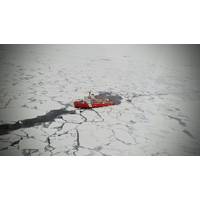
New Study Finds Polyester Fibers Throughout the Arctic Ocean
was led by a a team at Ocean Wise Conservation Association in Vancouver, and supported by field teams from Fisheries and Oceans Canada. We collected seawater samples from just below the surface of the Arctic Ocean as part of four scientific expeditions stretching from Tromsø, Norway, to the Beaufort Sea in North America.A total of 71 near-surface samples were collected across the Arctic. We also collected 26 samples from the Beaufort Sea from just below the surface down to a depth of 1,015 meters. We then filtered and analyzed the samples back at the Ocean Wise Plastics Lab using microscopes

ASL Hires Dr. Asplin
.Dr. Asplin had previously completed a NSERC Industrial Postdoctoral Research and Development Fellowship with ASL Environmental Sciences Inc. from 2013–2016. This research program was designed to continue the theme of study of his Ph.D. program as part of the ArcticNet–Industry Beaufort Sea Research collaboration between ArcticNet, BP, Imperial Oil, and ASL. He completed research within the following topics: 1) surface atmospheric circulation systems—changes and trends for the western Arctic, 2) momentum coupling of atmospheric forcing to ice and near-surface ocean
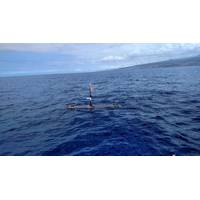
Wave Gliders to Study Arctic and Southern Oceans
through the world’s largest ocean current, the Antarctic Circumpolar Current,” said Dr. Jim Thomson, Senior Principal Oceanographer at The APL-UW. “The data collected provided unprecedented temporal and spatial coverage and I have great confidence our upcoming Arctic mission in the Beaufort Sea, part of the Stratified Ocean Dynamics of the Arctic, will again provide valuable insights.&rdquo
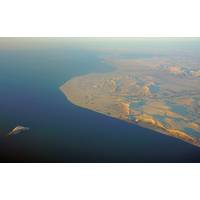
Alaska Requests Limits on US Offshore Drilling
but cut the 11 proposed sales in the Bering Sea and Gulf of Alaska. "Such a program will maximize agency resources and reflect the areas with the broadest support for development among Alaskans," Senators Lisa Murkowski, Dan Sullivan and Don Young said in the letter. The Beaufort Sea off Alaska's northern coast is the federal offshore Alaska area with the most exploration drilling to date, but there is no producing oil field located entirely in federal Beaufort waters. The more remote Chukchi Sea, off northwestern Alaska and believed to hold vast amounts of oil and
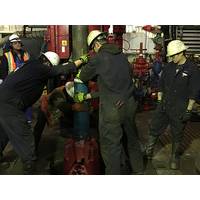
Eni Begins Drilling Oil Well in Alaska's Beaufort Sea
Italian oil producer Eni this week began drilling a new well in U.S. waters off the north coast of Alaska, becoming the first company to do so since 2015, federal regulators said on Wednesday. The oil and gas firm is working from an artificial island in the Beaufort Sea about three miles off Oliktok Point in the Arctic Ocean. The well is expected to run more than 6 miles (10 km) long. The project could result in 20,000 barrels a day of oil production, according to regulator U.S. Bureau of Safety and Environmental Enforcement (BSEE), which said it sent employees to the site to ensure


 February 2025
February 2025





